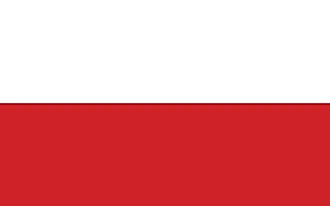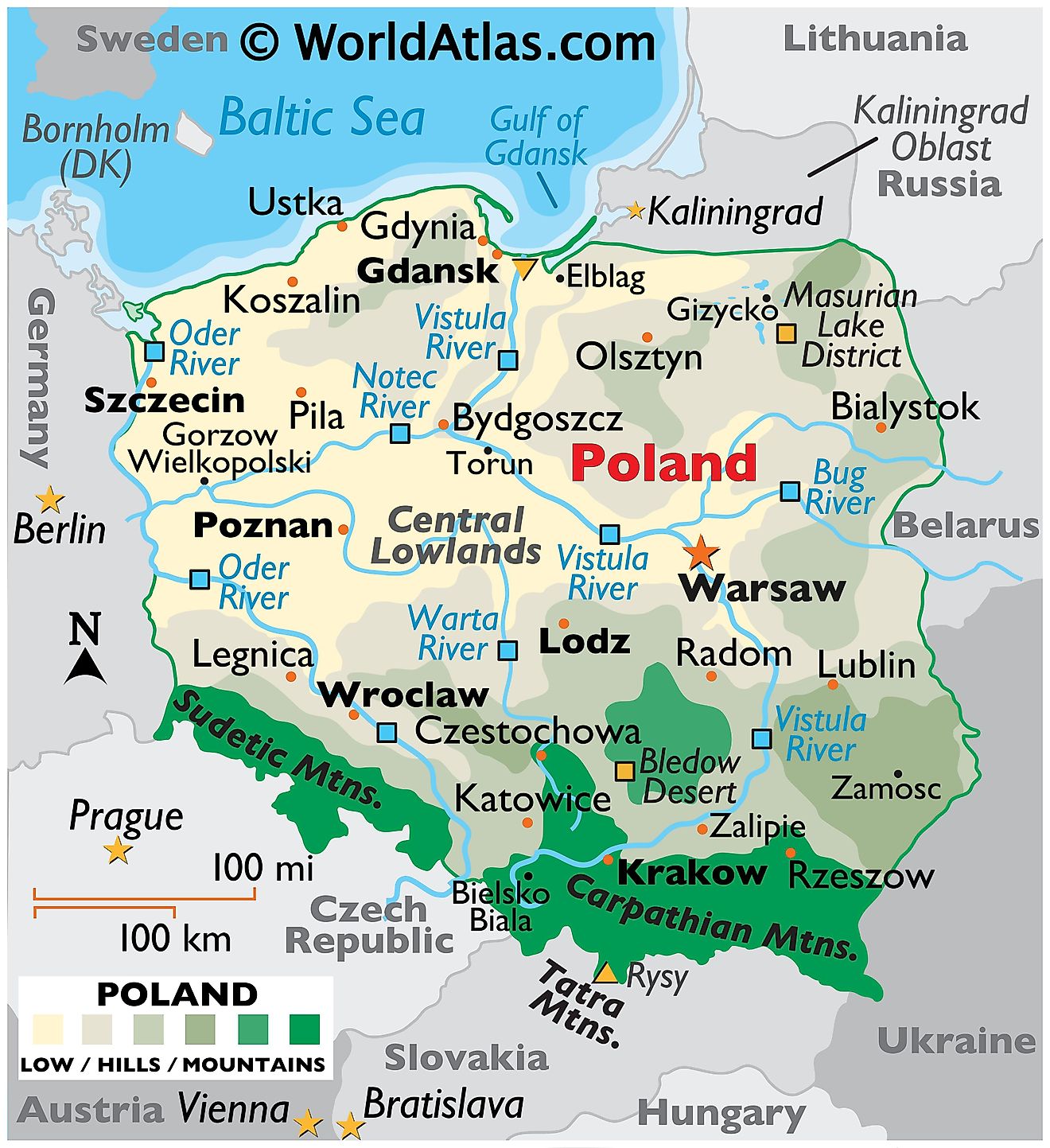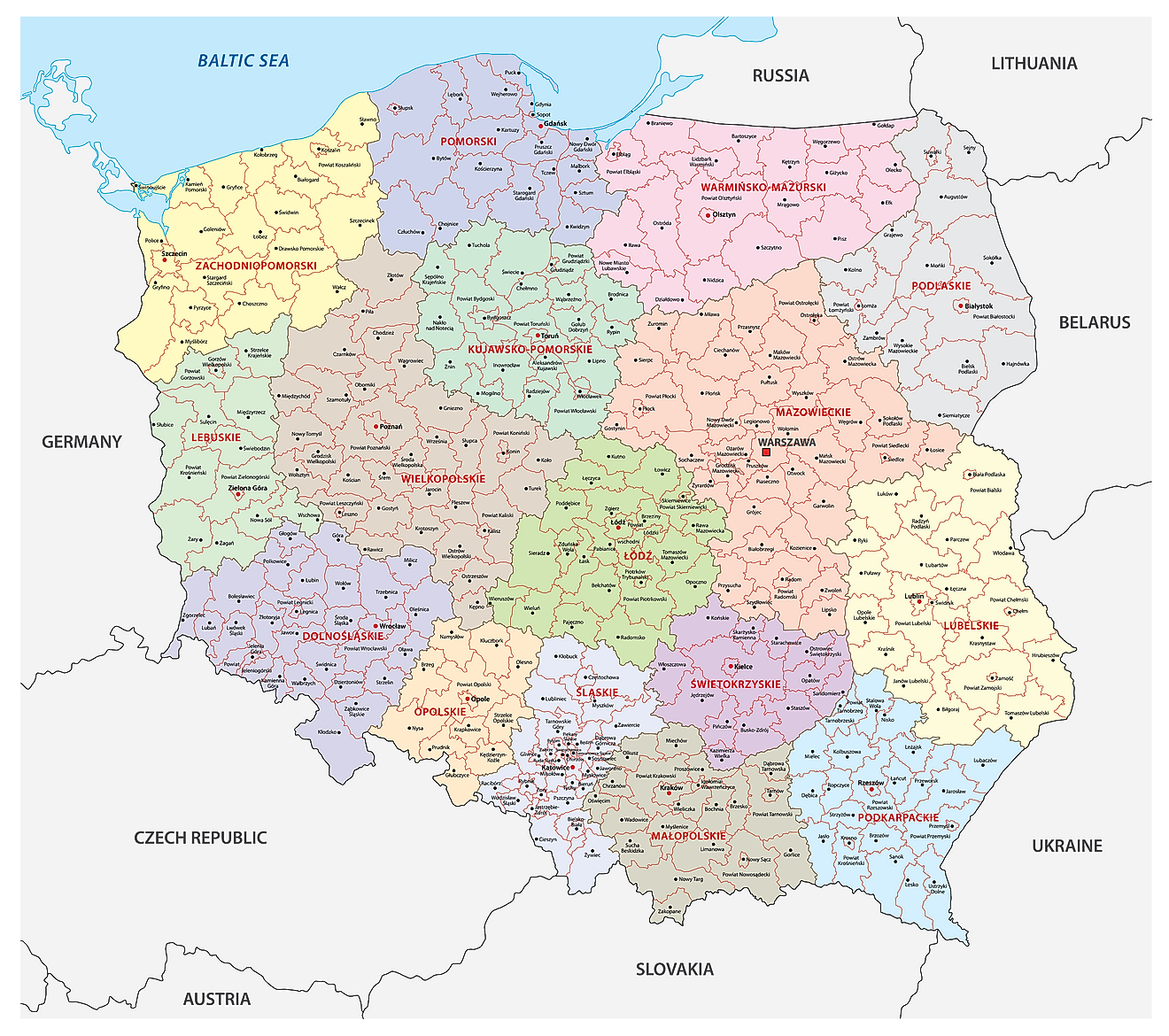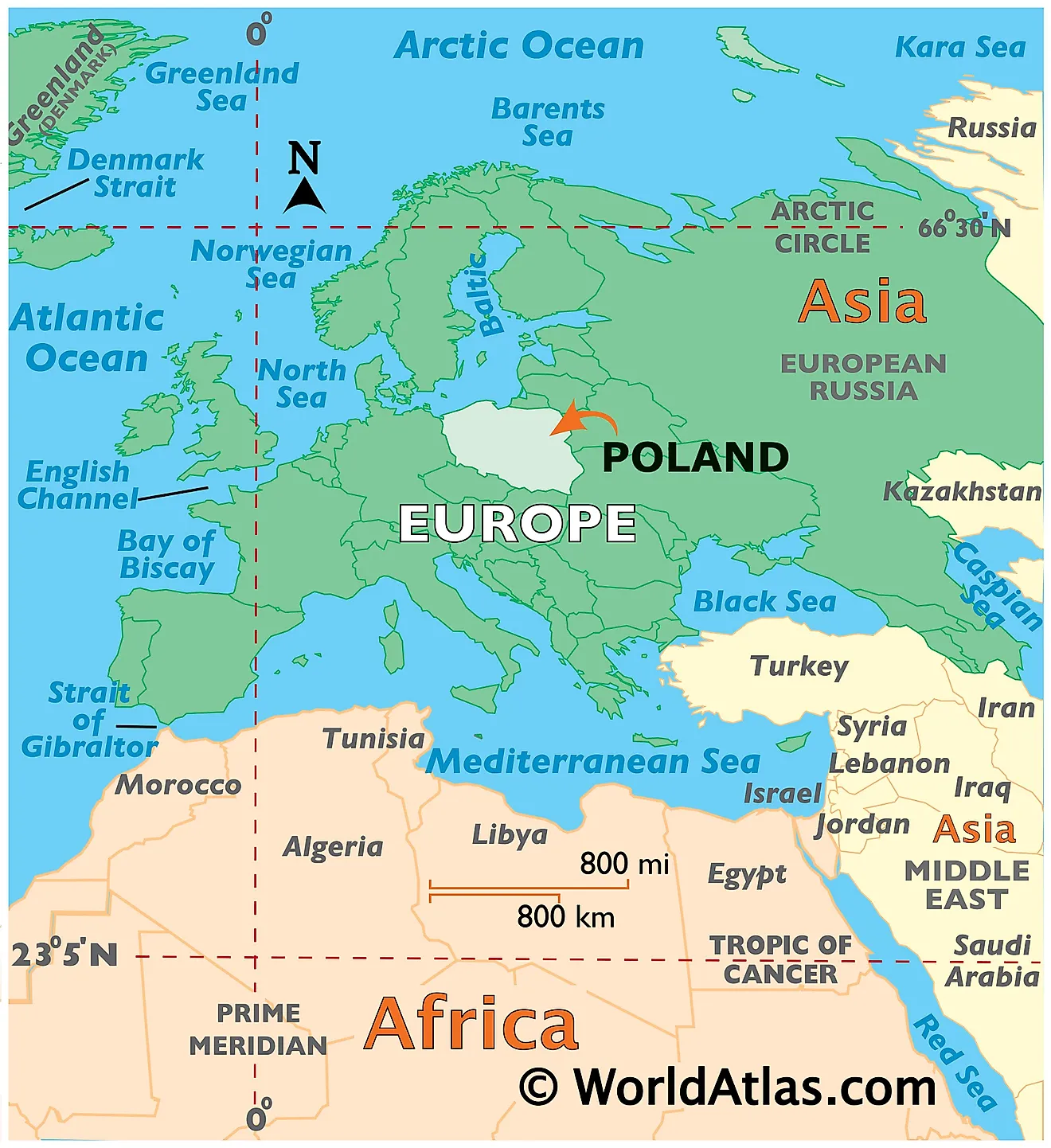Poland Maps & Facts (original) (raw)
Poland is a Central European country covering an area of 312,696 sq. km in Central Europe.
As seen on the physical map above, the country has a coastline on the Baltic Sea to the north. The coastline is fairly smooth with beaches and sand dunes but indented by scattered low-rising cliffs.
From the Baltic lowlands, Poland's land rises gently into tree-covered hilly areas, with some higher elevations in the Pomeranian Lake District in the northeast.
The northern regions are somewhat hilly. Flat fertile farmlands and river valleys dominate the Central Lowlands that blend into a hillier area to the south of the Vistula River.
The southern third of the country is a mountainous region. Major ranges include the Sudetes, and the Tatra Mountains which are the most elevated part of the Carpathian Mountains. Poland has 21 mountains over 2,000 m (6,600 ft) in elevation, and all are located in the Tatras, along the border with Slovakia. Poland's measured highest-point is Mt. Rysy in the High Tatras; it stands at 2,499 m (8,199 ft) in elevation. The lowest point in Poland at -1.8 m (-5.7 ft) is located at Raczki Elblaskie in the Vistula Delta.
Marked on the map above is the Bledow Desert that is located in southern Poland. It is only one of five natural deserts in Europe. It has a total area of 32 sq km (12 sq mi). Some of its dunes extend up to 30 m (98 ft).
The Oder, Vistula and Warta are the country's major rivers. The longest river in Poland is the Vistula at 1,047 km (651 mi) long. It is followed by the Oder which forms part of Poland's western border, at 854 km (531 mi) long.
Poland has hundreds of small lakes, and in Europe, only Finland has a greater density of lakes. Numerous small lakes dot the far northeast.
Voivodeships of Poland Map
Poland (officially, the Republic of Poland) is divided into 16 voivodeships [provinces] (wojewodztwa, sing. wojewodztwo). In alphabetical order, these voivodeships are: Dolnoslaskie (Lower Silesian), Kujawsko-Pomorskie (Kuyavian-Pomeranian), Lubelskie (Lublin), Lubuskie (Lubusz), Lodzkie (Lodz), Malopolskie (Lesser Poland), Mazowieckie (Masovian), Opolskie (Opole), Podkarpackie (Subcarpathian), Podlaskie, Pomorskie (Pomeranian), Slaskie (Silesian),Swietokrzyskie (Holy Cross), Warminsko-Mazurskie (Warmian-Masurian), Wielkopolskie (Greater Poland) and Zachodniopomorskie (West Pomeranian).
With an area of 312,696 sq. km, and a population of over 38 million, Poland is the 5th most populous member of EU. Poland serves as the geographical and cultural crossroads of Eastern and Western Europe. Located in the east-central part of the country, Warsaw is the capital and the largest city of Poland. It is also the administrative, cultural and economic center of the country. Warsaw is the 7th most populous capital city in EU.
Where is Poland?
Poland is a Central European country. It is positioned both in the Northern and Eastern hemispheres of the Earth. Poland is bordered by 7 nations: by Germany in the west; the Czech Republic in the southwest; Slovakia in the south; Ukraine in the southeast; Belarus in the east; Lithuania and Russia in the northeast. Poland is bordered in the north by the Baltic Sea. The country shares its maritime borders with Denmark and Sweden.
Poland Bordering Countries:Ukraine, Russia, Slovakia, Germany, The Czech Republic, Belarus, Lithuania.
Regional Maps: Map of Europe
Outline Map of Poland
Key Facts
| Legal Name | Republic of Poland |
|---|---|
| Flag |  |
| Capital City | Warsaw |
| 52 15 N, 21 00 E | |
| Total Area | 312,685.00 km2 |
| Land Area | 304,255.00 km2 |
| Water Area | 8,430.00 km2 |
| Population | 37,970,874 |
| Major Cities | Warszawa (Warsaw) (1,797,516) Kraków (Cracow) (769,417) Łódź (660,577) Wrocław (642,486) Poznań (523,287) Gdańsk (465,687) Szczecin (398,494) Bydgoszcz (342,204) Lublin (329,958) |
| Currency | Zlotych (PLN) |
| GDP | $592.16 Billion |
| GDP Per Capita | $15,595.23 |
This page was last updated on February 24, 2021


